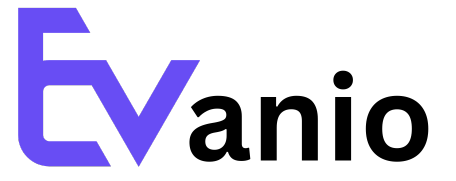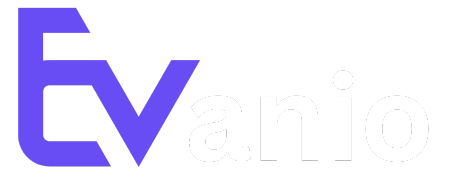In today’s rapidly evolving tech world, full stack developers are highly sought after for their ability to work on both front-end and back-end development. Full stack developers possess a wide range of skills that allow them to handle the entire software development process, from designing user interfaces to managing databases and server-side logic. If you’re aspiring to become a full stack developer, here’s a comprehensive guide to help you navigate the journey.
What is a Full Stack Developer?
A full stack developer is a software professional who can develop both the client-side (front-end) and server-side (back-end) of web applications. They have knowledge of all layers of development, including databases, servers, APIs, and version control systems. Full stack developers are versatile and can handle a project from start to finish, making them invaluable in many development teams.
Skills You Need to Become a Full Stack Developer
Becoming a full stack developer requires proficiency in a broad set of technologies. Let’s break down the essential skills:
1. Front-End Development Skills
The front end refers to the part of the application that users interact with. It’s crucial to have a strong foundation in front-end technologies, including:
- HTML (HyperText Markup Language): The basic structure of web pages.
- CSS (Cascading Style Sheets): Responsible for styling web pages, including layout, colors, and fonts.
- JavaScript: A powerful scripting language that adds interactivity and dynamic content to websites.
- Front-End Frameworks: Learn frameworks like React, Angular, or Vue.js to build modern, responsive user interfaces quickly.
Understanding user experience (UX) principles and responsive design will also give you an edge in front-end development.
2. Back-End Development Skills
The back end is the server-side of an application, where the business logic, databases, and server communication happen. Key skills include:
- Server-Side Programming Languages: Proficiency in at least one back-end language, such as Node.js, Python, Ruby, Java, or PHP.
- Databases: Knowledge of databases like MySQL, MongoDB, PostgreSQL, or SQL Server to manage and store data.
- APIs and Web Services: Understanding how to create and consume RESTful APIs for communication between client and server.
- Authentication and Security: Learn how to handle user authentication, authorization, and secure data transfer.
3. Version Control Systems
Version control is essential for managing code and collaborating with other developers. Learning tools like Git and platforms like GitHub or GitLab will help you track changes and work on projects with a team.
4. DevOps and Deployment
Full stack developers should understand how to deploy web applications and manage servers. Familiarity with cloud platforms like AWS, Microsoft Azure, or Google Cloud, as well as containerization tools like Docker, will help you streamline deployment processes.
5. Problem-Solving and Debugging Skills
Strong problem-solving skills are critical for a full stack developer. You’ll often face complex issues that span both the front-end and back-end, and being able to debug efficiently will make you a better developer.
Step-by-Step Guide to Becoming a Full Stack Developer
Step 1: Learn the Fundamentals
Start by mastering the basics of web development, including HTML, CSS, and JavaScript. These are the foundational technologies that will help you build user interfaces and create interactive web pages. There are many free and paid resources online that can guide you through the learning process.
Step 2: Pick a Back-End Language
Once you’re comfortable with front-end development, choose a back-end language to specialize in. Popular options include:
- Node.js: A JavaScript runtime built on Chrome’s V8 engine, ideal for scalable applications.
- Python: Known for its simplicity and a large number of frameworks (like Django and Flask).
- Ruby: With the Rails framework, it’s a great option for building web applications quickly.
- Java: Often used in enterprise environments for its performance and security features.
Focus on learning one language well before branching out to others.
Step 3: Learn Databases and Server Management
Understanding how to work with databases is critical. Learn the differences between relational databases (like MySQL and PostgreSQL) and NoSQL databases (like MongoDB). You’ll also need to know how to manage data, handle queries, and connect the database to your back-end code.
Step 4: Dive Into Front-End Frameworks
After building a strong foundation in vanilla HTML, CSS, and JavaScript, move on to learning modern front-end frameworks such as React, Angular, or Vue.js. These frameworks make it easier to develop complex, scalable user interfaces.
Step 5: Build Projects
Hands-on practice is the best way to become a proficient full stack developer. Start building small projects, such as a simple blog or e-commerce site, using both front-end and back-end technologies. As you gain experience, work on more complex projects that challenge your skills.
Step 6: Learn Version Control and Collaboration
Once you’re comfortable building applications, learn how to use Git and version control systems. This is essential for managing code and collaborating with others on larger projects. GitHub and GitLab are popular platforms for hosting repositories and working with teams.
Step 7: Understand DevOps and Deployment
To become a true full stack developer, you need to know how to deploy your applications. Learn how to deploy apps to cloud platforms like AWS, Azure, or Google Cloud. Familiarize yourself with continuous integration/continuous deployment (CI/CD) pipelines and tools like Jenkins to automate the deployment process.
Building a Full Stack Portfolio
To land a job or freelance gig as a full stack developer, you’ll need a strong portfolio that showcases your skills. Focus on creating a variety of projects that demonstrate your ability to work with both front-end and back-end technologies.
Some ideas for portfolio projects:
- A fully functional e-commerce website.
- A task management app with user authentication.
- A blog platform with content management features.
- An API-powered web application with real-time data.
Job Prospects and Career Growth
The demand for full stack developers continues to grow as companies seek professionals who can handle both sides of web development. As you gain experience, you may choose to specialize in a specific area (e.g., front-end, back-end, or DevOps) or continue to enhance your skills as a full stack developer.
Conclusion
Becoming a full stack developer requires dedication, learning, and practical experience. With the right combination of skills in front-end and back-end technologies, along with a solid understanding of databases, deployment, and collaboration tools, you can build a rewarding career in web development. Start learning today, build projects, and gradually expand your expertise to become a proficient full stack developer!







